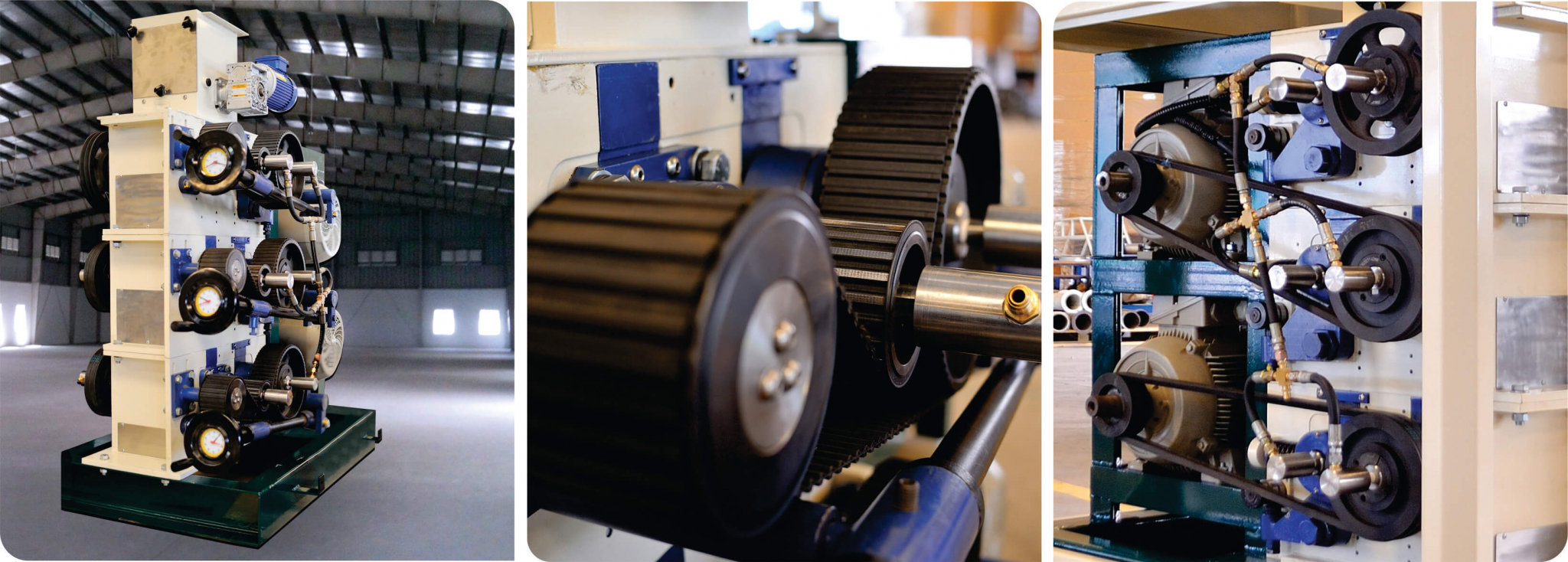Industrial Coffee Mill Guide: Increase Efficiency and Top Quality
In the affordable landscape of coffee production, picking the best industrial coffee mill plays a critical role in enhancing both efficiency and item high quality. Comprehending the nuances of different grinder types and crucial functions-- such as personalized grind setups and robust construction-- can dramatically influence the final flavor account of the coffee.
Comprehending Grinder Types
When picking an industrial coffee grinder, understanding the different kinds offered is critical for optimizing both flavor removal and operational efficiency. Both main kinds of mills are blade grinders and burr grinders. Blade mills utilize sharp blades that chop coffee beans into irregular sizes, causing uneven removal and potentially unwanted flavors. While blade mills are often much more budget friendly and suitable for small-scale procedures, they are normally not advised for industrial use.

Inevitably, choosing the ideal kind of mill is integral to keeping top quality and efficiency in coffee production, making it critical for services to buy top notch burr grinders for optimum results.
Key Attributes to Consider
Selecting a commercial coffee mill calls for cautious factor to consider of numerous essential functions that can considerably affect both efficiency and the overall coffee experience. One of the primary elements to evaluate is the grinding device. Burr grinders are typically favored over blade mills, as they offer a constant grind size, which is critical for optimum removal and flavor.
One more essential feature is the mill's capability. Relying on the quantity of coffee you require to procedure, pick a version that can manage your needs without sacrificing rate or quality. In addition, think about the grind setups used. A flexible grinder with several settings allows you to tailor the grind size to various developing approaches, boosting the coffee's taste profile.
Examine the grinder's sound level, particularly in an active coffee shop or production atmosphere, where excessive noise can be disruptive. Investing in a mill that balances these attributes can considerably enhance both operational effectiveness and the high quality of the coffee offered.
Optimizing Grinding Process
To attain the best results in coffee preparation, enhancing the grinding process is necessary. The work size substantially affects removal, flavor, and general high quality of the made coffee.


Furthermore, keeping track of the grinding speed can optimize the process. Slower grinding frequently creates much less warm, protecting delicate flavors and aromas. Conversely, faster grinding may generate too much warmth, adversely influencing the coffee's top quality.
Upkeep and Treatment Tips
Correct upkeep and care of industrial coffee grinders are important for guaranteeing optimal performance and long life. Routine cleaning is the foundation of upkeep; deposit accumulation can affect taste and grinding performance. It is a good idea to clean up the grinder after each use, cleaning down the outside and getting rid of any coffee grounds from the burrs.
In addition, check the grinding burrs for deterioration. Dull burrs can compromise grind uniformity, so they ought to be changed as required. Industrial Coffee Grinder. Occasionally calibrating the grinder is additionally crucial, as this preserves the preferred grind size for different developing methods
Lubrication of relocating parts should be executed according to the producer's specs, as this decreases rubbing and extends the life of the equipment. It is vital to utilize food-grade lubes to guarantee safety and conformity with hop over to here health and wellness regulations.
Lastly, maintain the mill in a steady and completely dry environment to avoid corrosion and corrosion. By adhering to these maintenance and care pointers, operators can boost the efficiency of their industrial coffee mills while making sure high-quality output and prolonged operational life.
Return on Financial Investment Evaluation
Reviewing the return on investment (ROI) for commercial coffee mills is critical for go to my blog companies looking for to optimize their coffee manufacturing capabilities. A complete ROI analysis aids determine the financial feasibility of investing in top quality grinders, enabling services to evaluate the initial expenses against possible gains.
To perform a thorough ROI analysis, organizations need to take into consideration numerous key variables. Examine the acquisition cost of the grinder, including setup and any necessary adjustments to existing framework. Next, determine operational prices, including energy consumption, maintenance expenses, and labor efficiency renovations. High-performance mills often cause minimized grinding time and raised throughput, which can considerably improve efficiency.
Additionally, take into consideration the influence on item top quality. Industrial Coffee Grinder. Superior grinders generate an even more consistent grind dimension, which can enhance taste profiles and consumer satisfaction, eventually driving sales. By increasing the top quality of the last item, companies can validate greater prices, leading to increased profits
Final Thought
In recap, a commercial coffee grinder plays an essential role in enhancing both performance and item top quality within coffee manufacturing. Ultimately, the calculated investment this website in a trustworthy mill adds considerably to improved profits and competitiveness in the coffee sector.
In the affordable landscape of coffee production, selecting the right industrial coffee grinder plays a pivotal role in improving both effectiveness and item top quality. The 2 main kinds of grinders are blade mills and burr mills. Within the burr grinder classification, there are level burr mills and cone-shaped burr mills, each with its benefits. Burr grinders are normally favored over blade mills, as they offer a consistent work dimension, which is important for ideal removal and flavor.
In summary, a commercial coffee grinder plays a pivotal function in enhancing both performance and product top quality within coffee manufacturing.